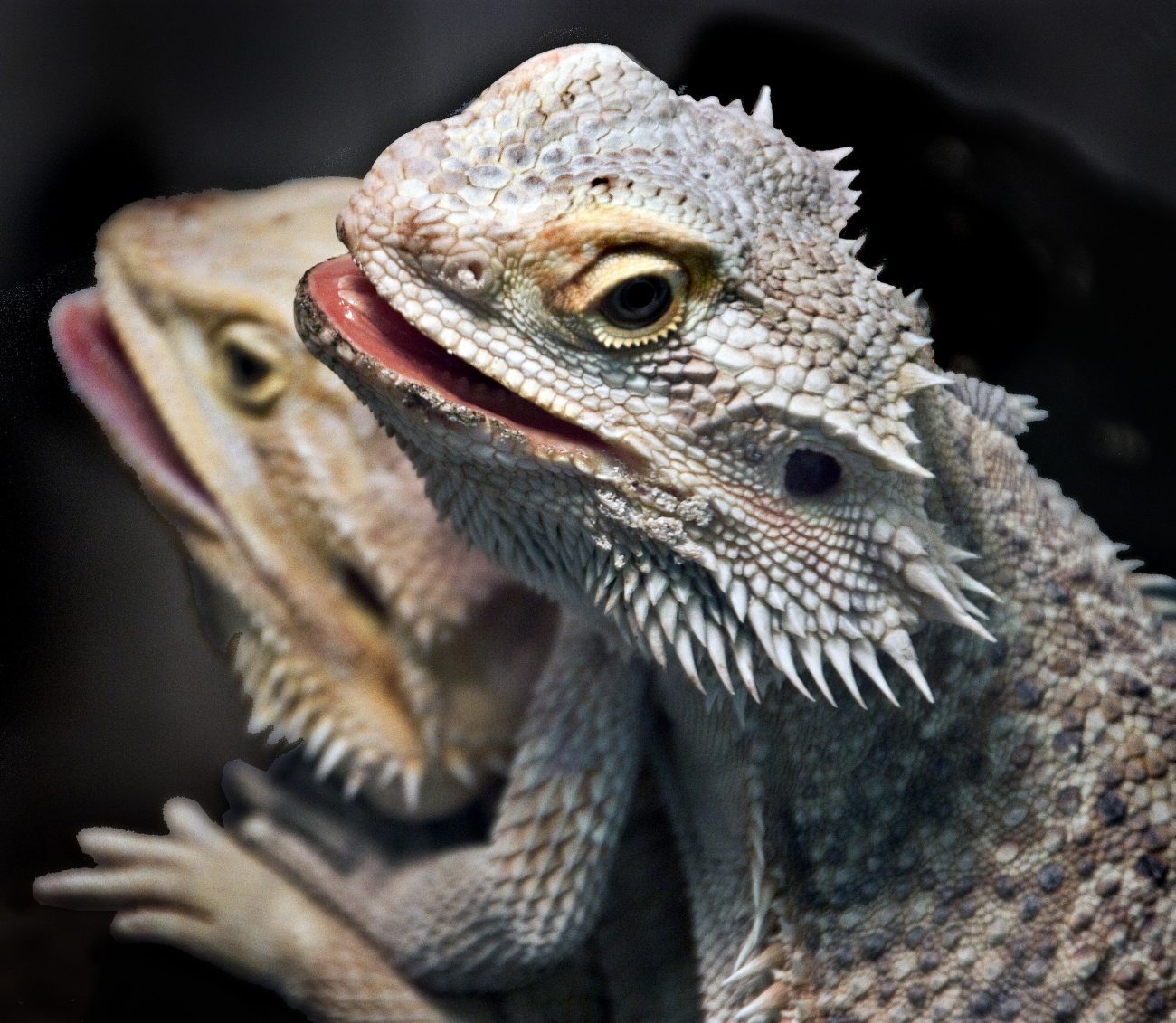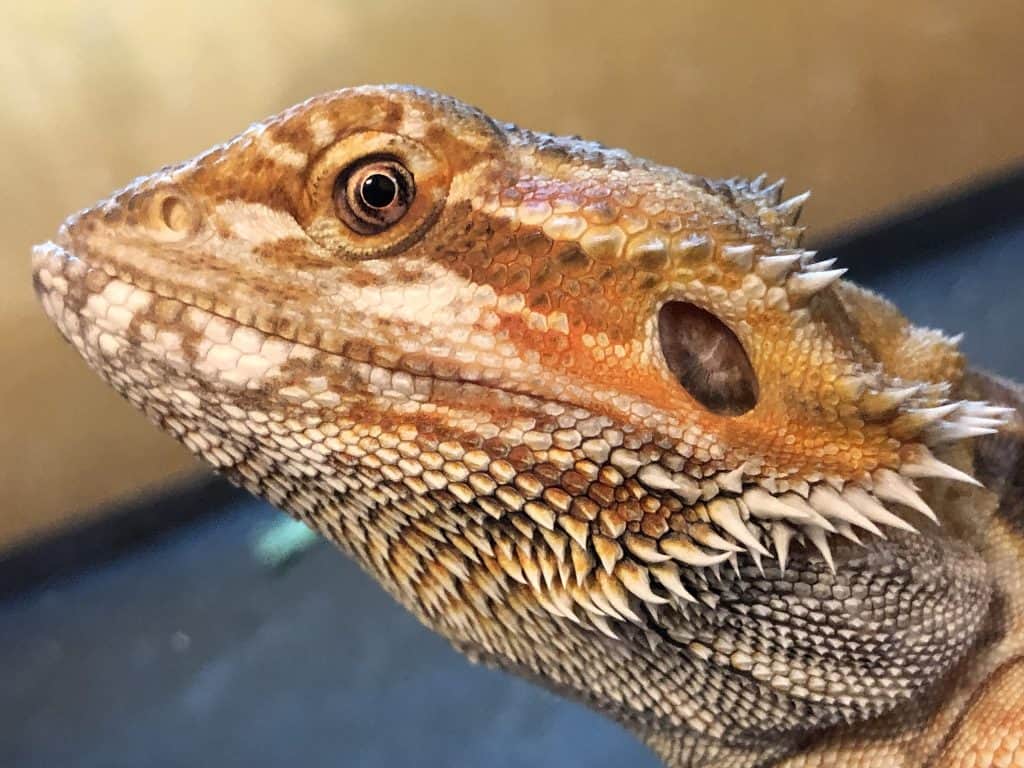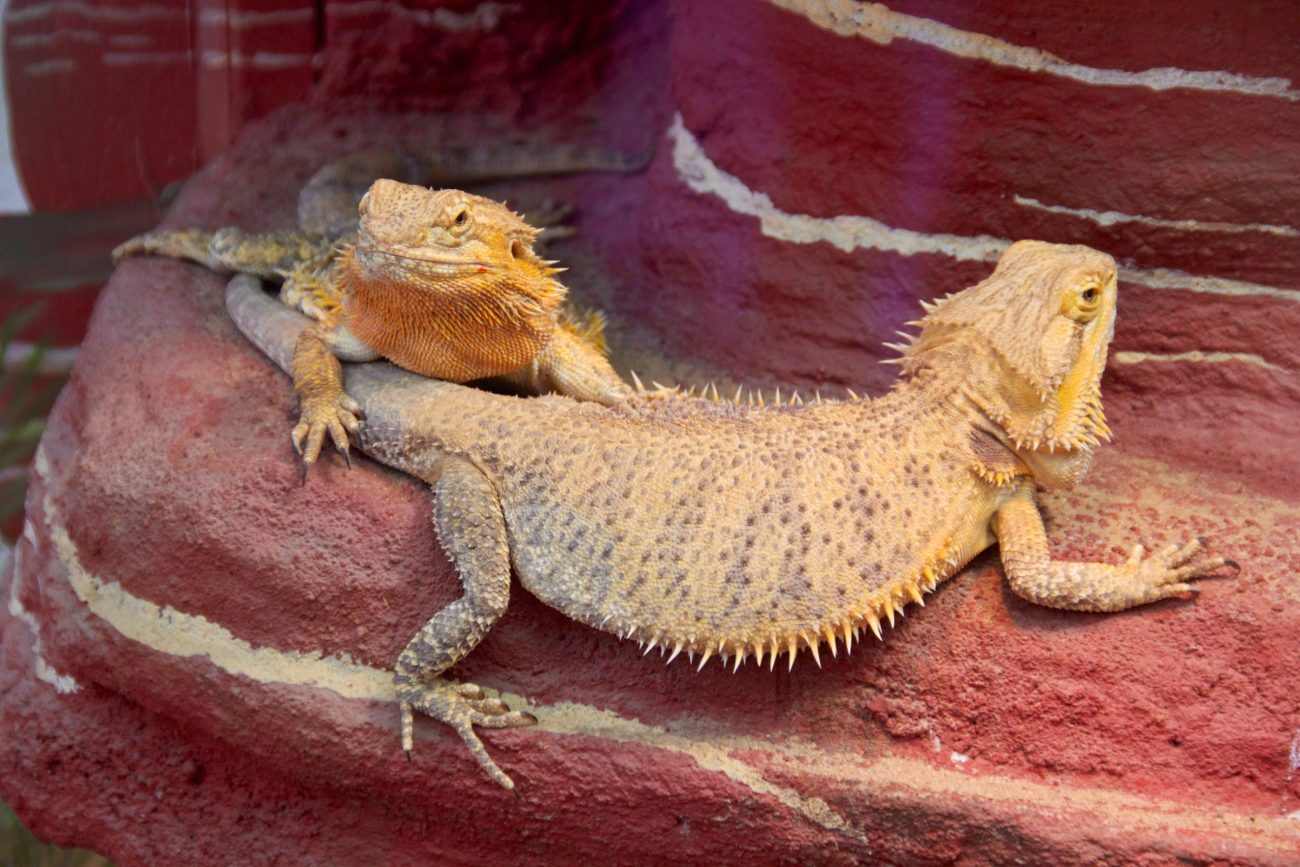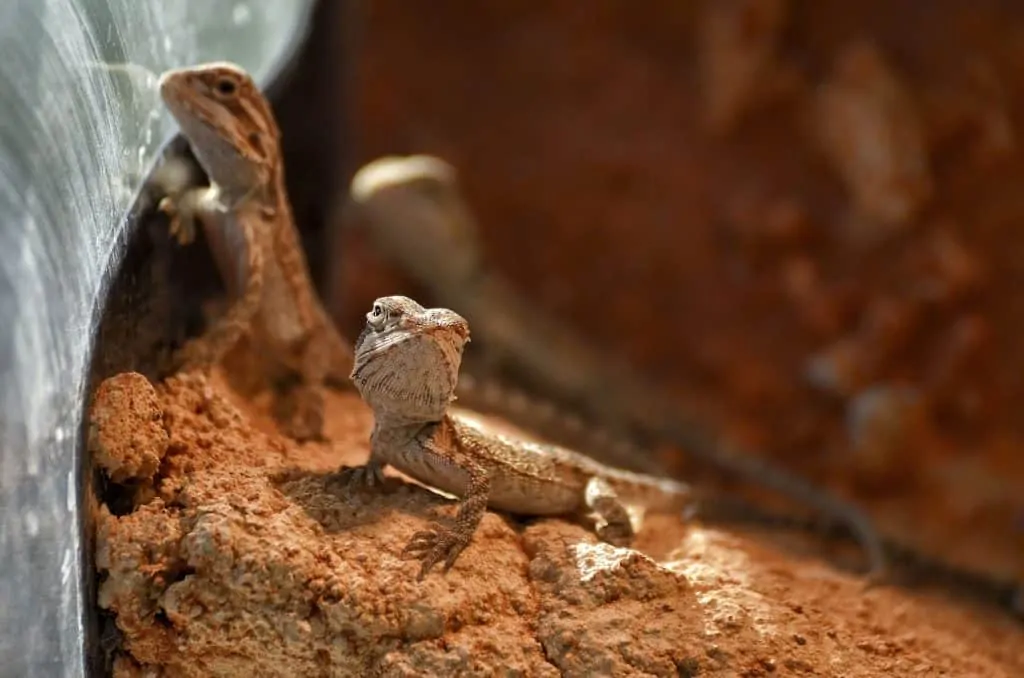Shedding, or ecdysis, in Bearded Dragons is a natural yet intricate process that plays a critical role in their life. They shed their old skin to make room for a new, healthier layer. This procedure, while common in reptiles, manifests distinctively in bearded dragons. This shedding is neither uniform nor predictable – but a fascinating spectacle. But why do they shed? Here’s the scoop:
- Growth-Induced Shedding: As they grow, their tight skin needs to be shed to fit their larger body.
- Skin Renewal for Damage: Shedding helps them heal from injuries or environmental damage.
- Nutritional Balance: A response to dietary deficiencies affecting skin health.
- Parasite Defense: Sometimes, they shed a lot to deal with skin problems caused by parasites.
- Stress Adaptation: They might shed in response to stress from their surroundings.
- Enhanced Calcium Absorption: New skin is better at absorbing important nutrients.
Keep reading to learn how understanding shedding can help you take better care of these special pets.
Shedding Process in Bearded Dragons
The shedding process in bearded dragons, scientifically known as ecdysis, is a fascinating and complex biological phenomenon. In this process – they grow a new layer of skin under the old one. When the new skin is ready, the dragon releases special enzymes. These enzymes play a pivotal role in the shedding process by helping to loosen & separate the old skin from the new layer beneath it.
The old skin doesn’t come off all at once, like it does for snakes. Instead, it flakes off in bits and pieces over time. This gradual shedding is a unique characteristic of bearded dragons, making them different from other reptiles.
Why Do Bearded Dragons Shed?
You might be wondering why bearded dragons need to go through this process. Is it even necessary for them? Understanding the reason behind this process is vital for every pet parent. Below, I’ve outlined the main reasons behind their shedding.
- Growth: The main reason bearded dragons shed is because they are growing. Their skin, made of a non-stretchy material called keratin, can’t stretch to fit their growing body. So, they need to shed the old skin to make space for their new, bigger body. Young dragons do this a lot because they are growing fast.
- Skin Damage: Shedding can also happen if their skin gets damaged. Adult bearded dragons might shed to heal from injuries or skin damage. And this damage could be from things like cuts or living in dirty places. So, shedding allows them to replace the damaged layer with fresh, healthy skin.
- Malnutrition: Not getting the right nutrients can affect their skin, often causing unusual shedding patterns. When a diet is deficient in vital vitamins and minerals, it leads to subpar skin health. And this can initiate atypical shedding. Bearded dragons often eat their shed skin because it has a lot of calcium, which they need.
- External Parasites: Parasites, like mites, can make them shed too much. These parasites irritate the skin, leading to itching and subsequent scratching or rubbing. This itching and scratching can mess up how they normally shed and lead to problems.
- Stress: Things that stress them out, like being handled too much, living in a crowded place, or loud noises, can cause them to shed too much. Stress changes normal behavior and can make them not eat right, worsening shedding problems.
- To Increase Calcium Absorption: New skin in bearded dragons helps them absorb calcium better. This is because fresh skin turns UVB light into Vitamin D more efficiently than old skin.
Signs of Shedding in Beardies
When your bearded dragon starts shedding, there are several signs you can look out for. These signs show they’re going through this important natural phase:
- Dull, Grayish Appearance: The onset of shedding is often marked by a noticeable change in skin appearance. And it looks less bright – turning dull and greyish. You’ll notice this, especially on their:
-
- Head
- Back
- And tail
-
The skin might also look a bit wrinkled. This change is because the old skin is getting ready to come off.
- Decreased Activity: Shedding can be quite uncomfortable for them. And you might see them being less active, avoiding things they usually do, like being handled, basking, or exploring. And they often sleep more or hide during this time, looking for safety & comfort.
- Cloudy Eyes: Their eyes might look cloudy or milky. This is due to dry skin and fluid build-up around their eyes. Their eyes may also look swollen and puffy, and this can cause discomfort, leading to more frequent eye rubbing than usual.
- Increased Scratching and Rubbing: Another sign is a lot of scratching with their legs and rubbing against things like rocks or branches. These actions help loosen and remove the old skin.
- Reduced Appetite: Shedding can make them not want to eat as much. This is normal – but it’s important to watch it. Make sure they drink enough water, as not drinking can make them eat even less.
Other signs they’re shedding include lethargy, having a black beard, seeing small flakes of skin coming off, and being irritable.
Shedding Frequency In Bearded Dragons
Understanding the shedding frequency in bearded dragons is crucial for their proper care. And it mostly depends on how old and fast they’re growing. But remember, every dragon is different and might not follow these patterns exactly.
However, these age-based guidelines provide a general understanding of what to expect regarding shedding frequency – helping to ensure appropriate care and monitoring throughout their life stages.
0 to 6 Months
Baby dragons grow quickly in this stage, about 1 to 3 inches each month. And this means they need to shed their skin often, almost every week. Shedding in this stage is more sporadic, occurring in random spots across their body.
6 to 12 Months
They don’t shed as much when they grow more slowly. They might shed twice a month at first, but this can slow down to once every two months by the time they’re a year old.
12 Months and Older
After their first year, bearded dragons shed much less, only a few times a year. This reduction in shedding frequency is attributed to their slower growth rate at this age.
One and a Half Years and Beyond
In adulthood, shedding becomes more irregular and less frequent, typically happening 2 times per year. Adult shedding depends on things like:
- UVB light
- Diet
- Breeding
- Stress
At this stage, shedding serves more as a “skin refresher” than as a result of growth.
How Long Does It Take a Bearded Dragon To Shed?
The time it takes for a bearded dragon to shed changes as they grow older:
- Hatchlings: They shed quickly, usually in 1-3 days. This fast shedding is because they’re growing rapidly at this age.
- Juveniles: They shed a bit longer, about a week or two. And this is due to their steady growth – though not as fast as when they were hatchlings.
- Adults: An adult bearded dragon takes longer to shed, usually two to three weeks. This longer period is due to their slower growth & larger size.
- Senior Years: Older bearded dragons also need up to three weeks to shed. If shedding takes more than three weeks, especially in older beardies, it might be a sign of a problem.
Bearded Dragon Shedding Problems
While shedding is typically a straightforward process for healthy bearded dragons. However, there are rare instances where problems can arise – necessitating veterinary attention:
- Failure to Shed: If they don’t shed at all, it’s worrying. This could be because of a bad diet, wrong living conditions, or health issues like impaction or metabolic bone disease.
- Stuck Skin (Dysecdysis): About 25% of pet bearded dragons have trouble shedding old skin. This can cause big problems, like stopping blood flow and, in severe cases, loss of limbs or toes. Things that can cause stuck skin include:
-
-
- Poor diet
- Inadequate hydration
- Wrong UVB lighting
- Wrong Temperature in their home
- Low humidity
- Health problems like parasites, tumors, ulcers, and blisters (caused by unhygienic tank conditions)
-
Signs of stuck skin include noticeable discoloration around the affected area.
These problems are rare, but owners need to watch out for them. If you observe these issues, consulting a vet is crucial for the health and well-being of your bearded dragon.
How To Assist Your Bearded Dragon Shed Their Skin
Usually, bearded dragons can shed on their own. But there are times when you, as their owner, can help. This can make them more comfortable or make shedding easier. Here, I have mentioned some effective ways to help them during their shedding phase:
1. Proper Habitat Setup
Creating an ideal environment in their enclosure is crucial. And this means having the right temperature and humidity. These things are really important to help them shed smoothly.
2. Incorporating Rough Materials
Placing objects like branches, rocks, slates, or reptile carpets in the enclosure can aid your bearded dragon in shedding. These help your bearded dragon rub off loose skin like in the wild.
3. Nutrition and UVB Lighting
Giving your bearded dragon a good diet with calcium & the right UVB light is important. This doesn’t just keep them healthy in general – but it also helps with shedding.
4. Avoiding Skin Removal
Don’t try to pull off their skin. Even if it looks loose, pulling it off can hurt them and maybe cause injuries.
5. Misting
Regularly misting your bearded dragon can help in shedding. This makes their skin softer and easier to shed. But aim for a moderate misting frequency, about 2-4 times per day.
6. Bathing
A warm bath can help, especially with skin that’s hard to shed. The water makes the skin looser. But keep baths short, around 20 minutes.
7. Using Shedding Bath Formulas
You can try a shedding bath formula if normal methods aren’t working. When added to bath water, these formulas can make the skin more receptive to shedding.
8. Limit Handling
Many bearded dragons don’t like being touched when they are shedding. Give them some space and handle them less. This avoids stress, and they are less likely to bite.
Now It’s Your Turn
Understanding the shedding process in bearded dragons is fascinating and crucial for any reptile enthusiast. Shedding is a normal part of a bearded dragon’s life and is very important for their health. If you care for a bearded dragon – you need to know when they are shedding and how to help them. You can do a lot to make shedding easier for them, like:
- Setting up their home the right way
- Feeding them well
- Or just letting them be.
Your help is really important to ensure they have a comfortable and healthy time when shedding. Remember, a well-cared-for bearded dragon is a happy and healthy one.
What specific steps have you taken to assist your bearded dragon during shedding? Have you noticed any unique behaviors in your pet during this phase? Let’s share experiences and tips to enrich our collective knowledge in reptile care.





